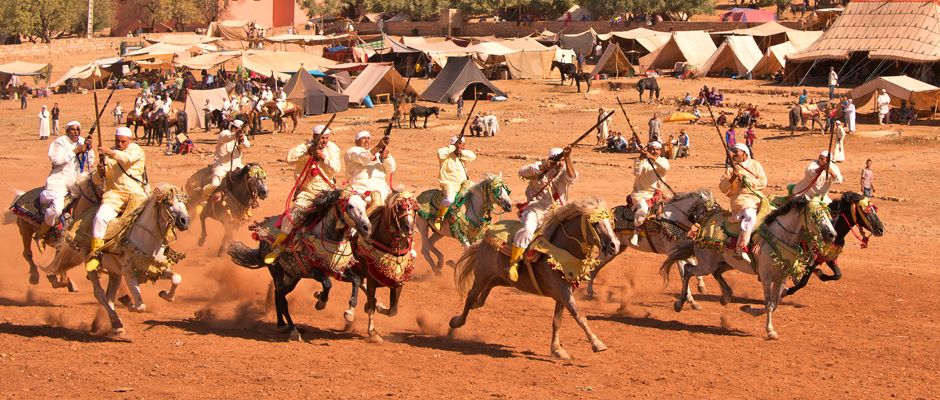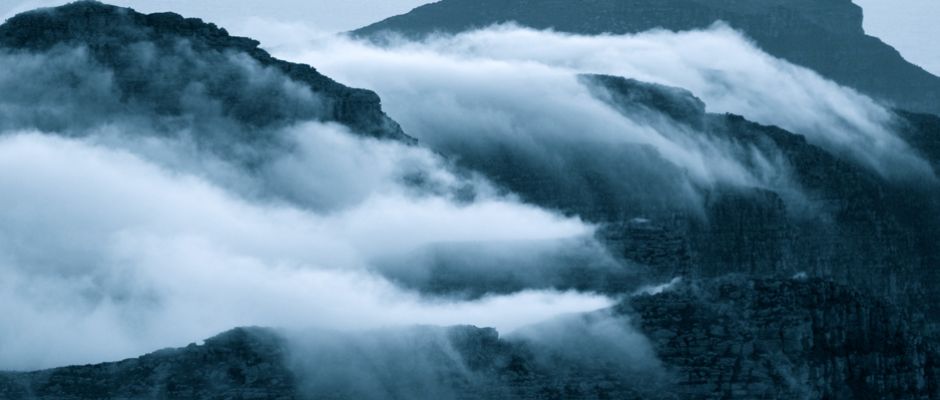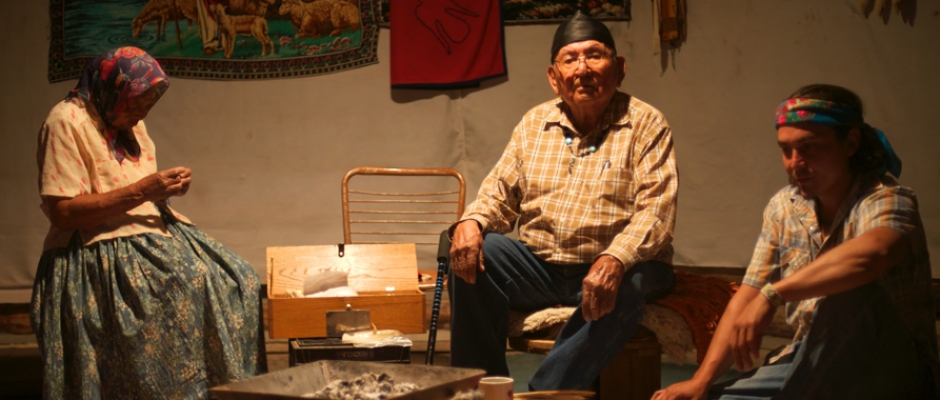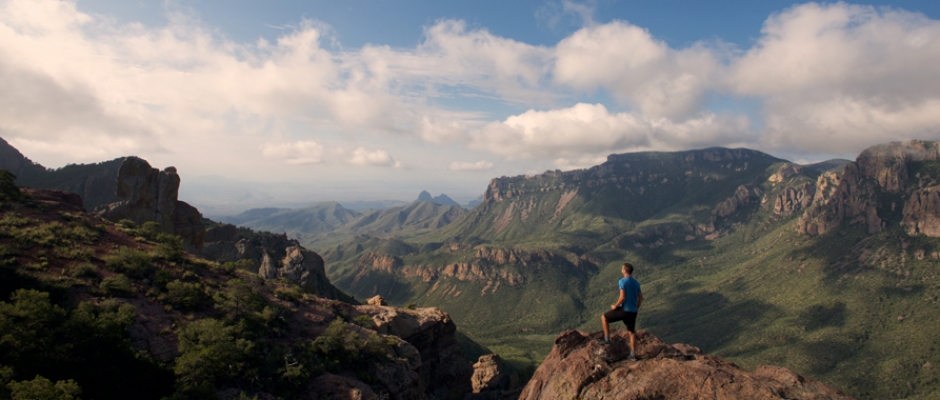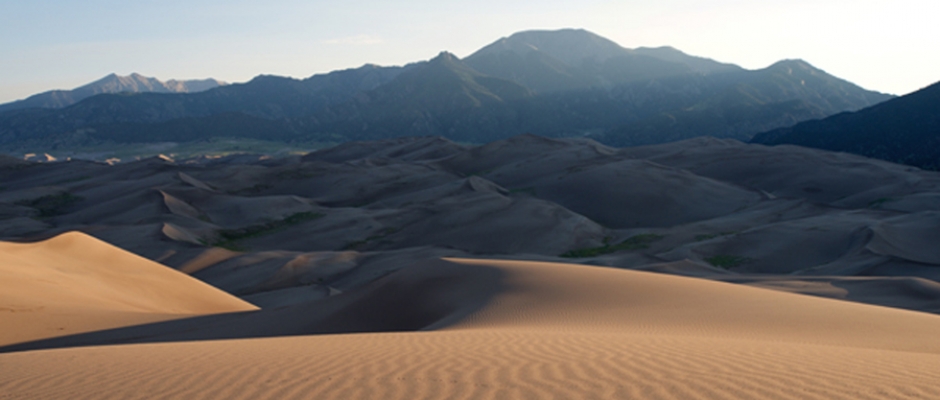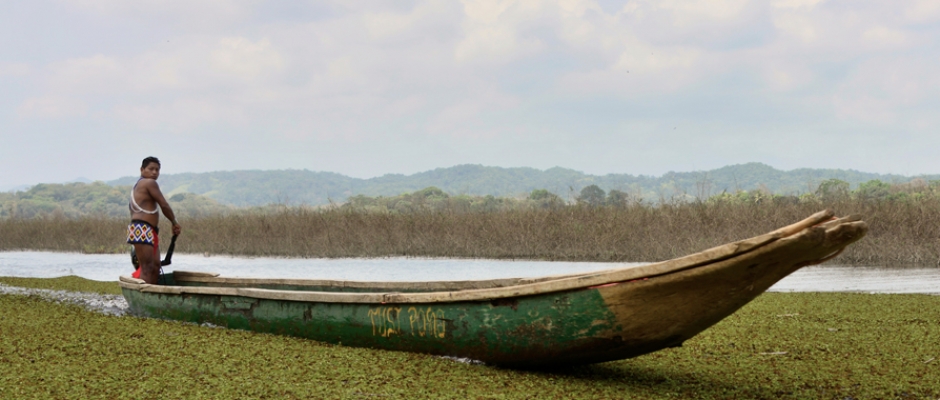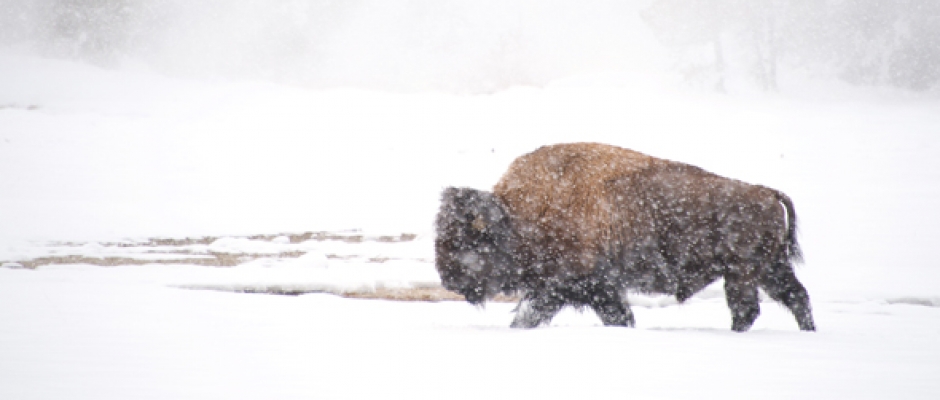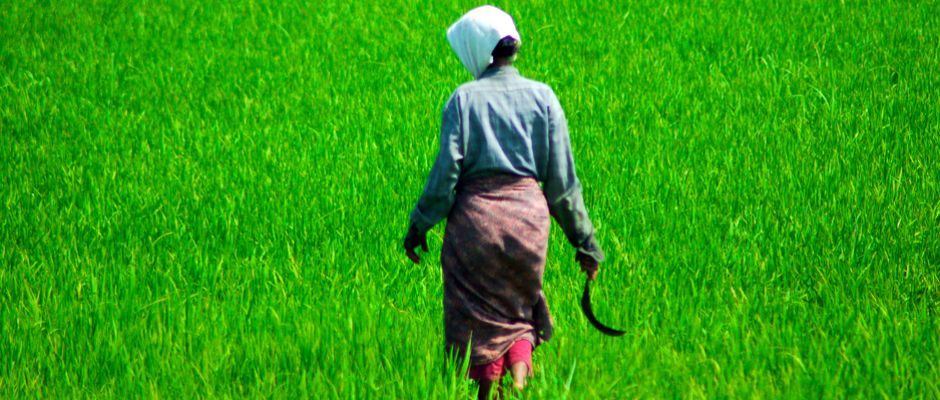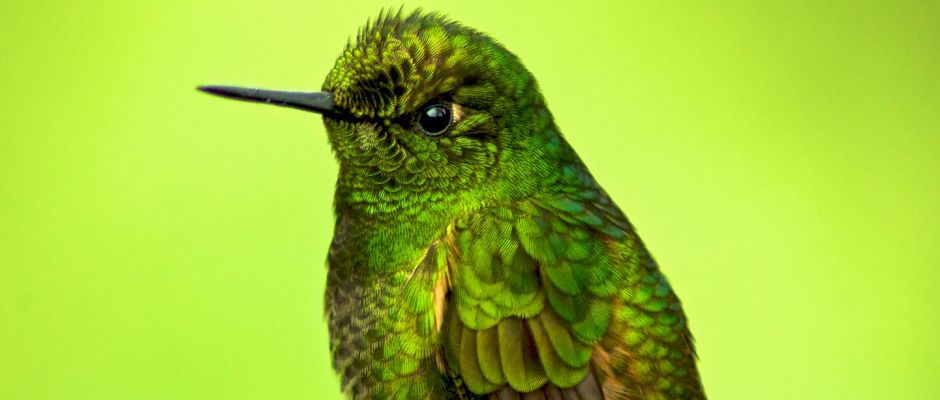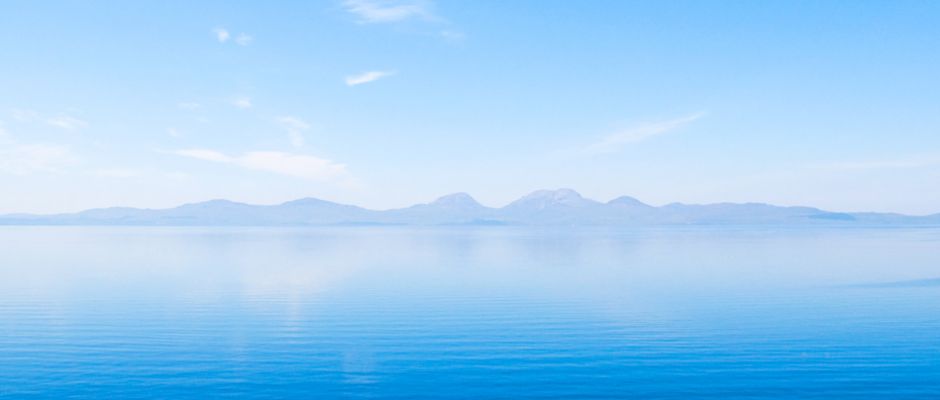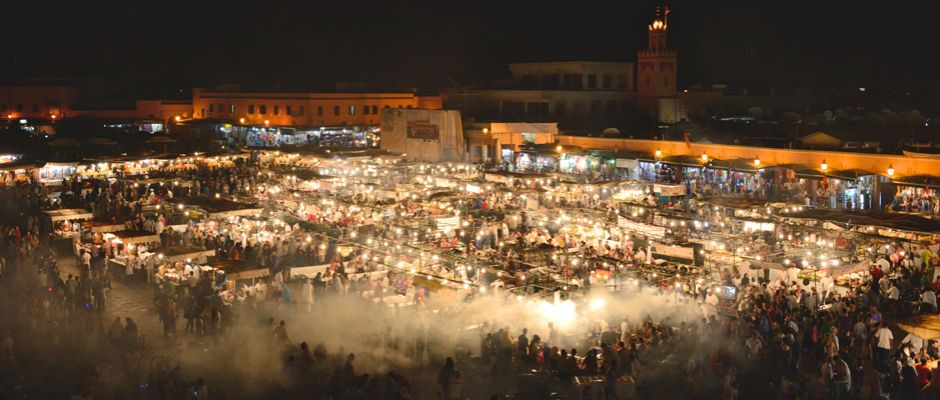Destinations

50 Greatest National Parks of the World |
50 Greatest National Parks of the World
From tracking down snow leopards in Bhutan to getting drenched by the tallest waterfall on Earth, award-winning travel writer Aaron Millar reveals the history, legends and cultures of the world’s greatest national parks and the insider secrets on how to see them at their most spectacular and jaw-dropping best.
National parks are home to the most treasured and beautiful places on Earth. They represent the identity of a country and the soul of its people. When we look across the red rock spires of the Grand Canyon, we connect with the spirit of the American West. When we walk among the endless grasslands of the Serengeti, we walk with the Maasai people too. National parks are the epitome of travel dreams, the canvasses for the greatest adventures of our lives.
Yet, due to the pressures of the mining, oil and gas industries, they are more threatened now than they have been for decades. Telling the story of the world’s greatest national parks has never been more vital, and relevant, than it is today.
Book Highlights:
- Explores many lesser known and undiscovered national parks: North Luwanga, in Zambia, home of the walking safari, visited by only 500 people a year; Gwaii Haanas, in British Colombia, the Galapagos of the north, and many more.
- Reveals the insider information, and expert tips, on how to see them best, from catching a ‘superbloom’ of wildflowers in Death Valley to having the ancient Mayan ruins of Tikal all to yourself.
- Features award-winning travel writing: Feel what it’s like to look a Grizzly in the eye in the backcountry of Denali or share airag liquor with the Golden Eagle hunters of the Mongolian steppe. This in-depth, and extremely well-researched, compendium is more than just a guidebook, it’s a window into the most awe-inspiring experiences on the planet.

50 Wonders of the World: International Space Station (sample chapter) |
50 Wonders of the World: International Space Station (sample chapter)
The International Space Station (ISS) is one of humankind’s greatest achievements. It is the largest and most complex structure ever flown in outer space and one of the most ambitious projects ever conceived in the history of the world. Right now, as you read this, a team of six astronauts, are hurtling around the planet at 17,500mph. They will complete a circle of the globe every 90-minutes, 16 orbits a day, a sunrise or a sunset every 45-minutes. To date, the ISS has orbited the Earth more than 90,000 times.
International Space Station
It cost more than $100 billion dollars to produce and had to be assembled piece by piece, while in orbit, requiring the skills of more than 100,000 people for more than a decade of work. Perhaps most impressively, it has been continuously manned since November 2nd, 2000. Most of the world’s children alive today have never lived without a permanent settlement of people orbiting above them. The ISS, in this sense, is our first colony in space. And no country could have done it alone. Building it required the cooperation of a family of nations united in a single endeavour: to enrich the knowledge of all humankind and take our first steps towards our destiny in the stars.
Stretching 335-feet across, about the length of a football field, and weighing nearly one million pounds, it is the biggest object ever put in space. Attached to the centre truss are 16 enormous solar panels, more than an acre across, and compartments where the crew work and live. There are no politics up here. Half of the station is run by America, half by Russia, with astronauts from Canada, Japan and Europe regularly on board, and the role of station commander alternating between a US astronaut and a Russian cosmonaut.
For much of its early years, the crew were engaged in building the station itself. Components had to be flown up on rockets one at a time and then assembled in orbit. This meant dozens of complex space walks each year, in which delicate engineering operations had to be performed in the vacuum of space. Each walk was potentially lethal and so had to be rehearsed in underwater simulators back on Earth for up to two years previously. That required an enormous logistical undertaking. And it’s still ongoing. Supply ships must regularly drop food and materials, maintenance is constant and plans for expansion are in place.
ISS Science
But now that it’s complete, its primary purpose is to do science. The microgravity environment on board enables a range of unique research opportunities, from developing new kinds of pharmaceuticals and combustion systems to collecting data about climate change, cosmic rays and dark matter. But perhaps most important of all is the work involved with studying the effects of space exploration on the human body. If the ISS is humanity’s first step into outer space, the next is almost certainly Mars. But reaching the red planet would mean at least a two year round trip. Aside from the psychological challenges, such an undertaking would exact an enormous toll on the human body. Even relatively short stints in zero-G result in astronauts losing significant amounts of bone and muscle mass, as well as other complications. Learning how to lessen these effects is vital to the future of long-term space exploration.
Astronauts onboard today must counteract these physical side effects with a minimum of two and a half hours a day, six days a week. In between they are working flat out on maintenance, experiments, cleaning and repairs. They can’t shower, they have to sleep tethered to a wall, eat vacuum packed food and wear the same clothes for a week. It’s hard work. But the pay off is they get to fly. Living in zero gravity means being liberated from the laws of physics. Astronauts spend their three, six or even 12 month long quotas floating through the ship, utterly weightless, performing flips in mid-air. They describe it as sheer joy.
The Overview Effect
And then there’s also that view. Looking at the Earth from space has had a profound, and often spiritual, effect on the few men and women lucky enough to see it. There is the exquisite beauty, of course: the dark blue oceans, storms of swirling white clouds, the faint line of turquoise and violet on the edge of the atmosphere, all the cities of man lighting up in the night. But more than that is what it all means. Almost without exception astronauts come home with a profound sense of humanity’s shared destiny, that all the wars, all the conflicting ideologies, mean nothing when the Earth is viewed as it really is: a solitary sphere of life, alone in the vastness of space. Looking at the Earth from the outside there are no borders; the differences of race and nationality seem ludicrous, and the fragility of the Earth more apparent than ever.
That’s the real wonder of the ISS. Not the science, the technology or the sheer achievement that it exists at all, but the fact that it is the beginning, perhaps, of the next phase of humanity’s story. And we did it together. Not one nation, but many, working together in peace to pursue our shared future in the stars.
WHERE: Low Earth orbit.
HOW TO SEE IT: It’s possible to watch the ISS pass overhead from several thousand locations around the world. It appears as a fast moving star and can be seen easily with the naked eye. Check www.spotthestation.nasa.gov for details of where to see it near you.
TOP TIP: Follow a live video feed of from the ISS here: www.ustream.tv/channel/live-iss-stream
TRY THIS INSTEAD: Swiss Space Systems offer zero gravity flights at various locations around the world. Participants experience the weightlessness of real astronauts on board a specially designed jumbo jet. www.zerog.s-3.ch
Aaron Millar’s latest book, 50 Greatest Wonders of the World, is available on Amazon and other retailers.

50 Wonders of the World: Sagrada Familia (sample chapter) |
50 Wonders of the World: Sagrada Familia (sample chapter)
Gaudí’s masterpiece cathedral, the Sagrada Família, in Barcelona, is a work of staggering architectural genius. But it’s absolutely absurd too. Buttercup shaped ceilings glow in spores of purple, blue and yellow. Columns twist like plant stems. There are honeycomb caverns and pinnacles that look like blades of quartz grass. At first glance it’s as if a child’s doodle has been grotesquely brought to life. But then there is the familiarity: instead of gargoyles, amphibians sliver down the sides of his church, instead of straight lines the world twists like trees. That is Gaudí’s genius: order has been replaced by nature. ‘The Great Book’ as he called it, the Earth itself, is his inspiration. Walking into the Sagrada Família is like entering a forest of dreams.
Nature Inspired Architecture
And that’s exactly what he intended. “Originality is returning to the origin,” he would often say. That origin was nature. Gaudí was an extremely religious man. Nature, for him, was God’s perfect creation. The natural world was a representation of God itself. By honouring the Earth, his cathedral would honour God in a new, and more fitting, way.
And he didn’t hold back. Towers rise like ears of corn from the top of the temple; stairs spiral like seashells. Everywhere curves and flows; the straight lines of mankind have been banished. There is colour too. Bright ceramics detail the facades like lizard skin. Stained-glass windows illuminate the walls. The sun’s rays pour through the ceiling like dappled leaves. Look up and it is as if you are standing beneath the canopy of an enormous forest.
But Gaudí did not merely copy nature. He analysed its structural components and then applied those principles to his designs. He understood that nature inherently creates the strongest, lightest and most efficient designs. He didn’t just want his church to look like a forest, he wanted it to be built like a forest. Columns resemble tree trunks, but they also support the ceiling of the church in exactly the same way a tree’s branches support its crown. Roofs mirror the shape of leaves in order to make them lighter and better able to channel rainwater. Arches droop like inverted wet reeds, making them stronger than traditional semi-circular designs. Nature has been perfecting its construction for millions of years, all we need do, Gaudi teaches us, is observe, admire and learn.
Biomimicry
It’s an idea that’s rapidly catching on. Today advances in digital technology and 3D printing are expanding the scope of Gaudí’s vision exponentially and architects around the world are increasingly turning to the natural world for their inspiration. Termite mounds are being studied to see how we can ventilate buildings with minimal energy. The Japanese bullet train is inspired by a Kingfisher beak. Germany’s revolutionary BIQ building incorporates living algae into its transparent shell, naturally regulating the amount of light and shade let into the building.
And it’s not just architecture. Biomimicry, as its known, is infiltrating all aspects of our life. The iridescence in butterfly wings has led to brighter mobile phone screens and anti-counterfeiting technology. The eyes of a 45-million year old fly trapped in amber have inspired a new design of solar panel. The serrated proboscis of a mosquito, which minimizes nerve stimulation, is being copied in the design of hypodermic needles to reduce the pain of injections. Raptors are changing the way airplane wings are built. Tropical birds are inspiring cosmetics. And we haven’t even scratched the surface. Spider silk is five times stronger by weight than steel. Glowworms produce a light with almost no energy loss. There is a beetle that can detect the infrared radiation of a forest fire more than 50-miles away. Nature inspired technology may well be the industrial revolution of our generation. And it began here, with Gaudí’s masterpiece, the Sagrada Família.
But he never saw it completed. Gaudí began work on it in 1883 and spent the next 47 years of his life consumed by the project, until his death in 1926. But the project is so vast and complicated that it is not expected to be finished until at least 2026 – 100 years after his death. There is something profoundly moving about that. Not just because in the instant gratification demanded of our modern lives it’s so rare to see something conceived and realised over multiple generations. But also because we are here, now, at the birth of it. So much of what we celebrate as wondrous is inherited from antiquity. But this is a wonder for our time; and for the future too. And that’s exactly how Gaudí intended it. He saw the Sagrada Família as the first in a new era of religious buildings – one that fitted our post-industrial, secularized world. Instead of the imposing churches of the past, Gaudi built a forest. Instead of riches he gave us flowers. Gaudí reminds us that all we need to do to connect with our spirit, with something greater than ourselves, is return to our origin. Return to the Earth itself.
Aaron Millar’s latest book, 50 Greatest Wonders of the World, is available on Amazon and other retailers.
WHERE: Barcelona, Spain
HOW TO SEE IT: Open 9am – 6pm in winter, 8pm in summer. The L5 (blue) and L2 (purple) metro lines have stops across the street. www.sagradafamilia.org/en
TOP TIPS: The lines to get inside can be very long, buy your tickets in advance online. It’s possible to climb up into the towers, but beware: if you’re scared of heights, or claustrophobic, don’t go. The Passion Towers give you a better view of the ocean. The Nativity Towers give you better views of the mountains.
TRY THIS INSTEAD: Barcelona is filled with Gaudí’s work, including Parc Güell, Casa Batlló and many more homes, buildings, parks and attractions. www.barcelonaturisme.com
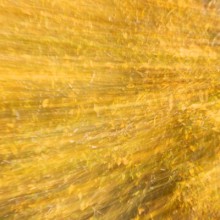
Rewilding | Discover
Rewilding
Feral is a delicious word. It means to be ‘in a wild state, especially after escape from captivity or domestication.’ For those of us living in the the modern world, feral is something we yearn for, and deserve.

Aluna: The Kogi Mamas |
Aluna: The Kogi Mamas
Shibulata is a Kogi Mama: an enlightened leader of one of the world’s last, lost tribes. Like all Mamas of the 18,000 Kogi people living in the remote Sierra Nevada de Santa Marta mountains of Colombia, he spent his entire youth in intense spiritual training – mastering a unique form of concentrated thought that the Kogi believe connects them to a kind of cosmic consciousness that underpins the material world, and is the basis of reality itself. Through this connection, they believe they are able to commune with the planet as a living entity – enabling them to protect its natural balance, and all living things within it. They call themselves the Elder Brothers of humanity, the guardians of the Earth, and they have come out of centuries of fiercely defended isolation, for only the second time in their existence, to send us, their ‘Younger Brothers’, a message.

Embrace Culture Shock | Encounter
Embrace Culture Shock
Culture Shock. It was market day in Tanant, a dusty Berber village in the foothills of the Atlas Mountains, Morocco. I was on my own and miles away from the tourist crowd. Stalls of fresh honey and sweet toasted almonds nestled beside hooked goat heads and enormous dried out cow tongues. People thrust hand-woven rugs and live chickens in my face. I saw a sheep being skinned to the side a blood splattered tent, and another being led calmly in. It felt like I’d been sucked into a maelstrom of brutal sensations, too raw and unfamiliar to understand. Leaving your comfort zone, I decided that day, is, well, uncomfortable.
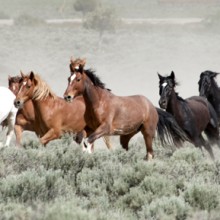
Cowboys & Creativity | Discover
Cowboys & Creativity
In the Great Basin of northern Nevada – a vast desert of scratchy sagebrush and bleached white, dried out salt beds – there are cowboys who recite poetry. Earlier this year I visited Elko, the town where they gather each January, and found it extraordinary that men who ride bulls and wrestle steers for fun, men whose macho swagger could run John Wayne out of town, would be inspired to get in touch with their feelings. But perhaps it shouldn’t have. Artistic inspiration can strike any of us, at any time, and recent scientific evidence suggests its blast is most potent when, like cowboys, we’re riding off into the sunset.
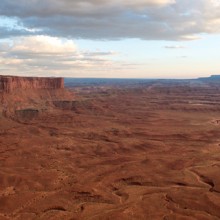
Utah Chasing Dinosaurs | Discover
Utah Chasing Dinosaurs
There are monsters in the wall of bones. In the dried out sandstone desert of northeastern Utah they rise to the surface of the earth like blood flushing skin. I trail my hand against the embossed remains of enormous teeth, articulated tailbones and talons that could crush a skull like grapes. But these skeletons are not the product of nightmares; these old bones once walked the earth. “Don’t worry,” a nearby Ranger says, as if reading my thoughts. “He’s too big for your closet and he definitely won’t fit under your bed.”

Nevada Mustang Monument | Encounter
Nevada Mustang Monument
The mustangs are running. At the base of the Goshute Mountains, in the Great Basin of Northern Nevada – a vast plain of white salt beds, scraggly sagebrush and sways of apple green crested wheatgrass – a herd, forty strong, cuts through the high desert in a bleached storm of pale yellow dust. In the distance, spring snow slips off shaded mountain slopes and wildflowers paint the unfathomable emptiness of America’s western range. What would it be like to ride in the midst of those galloping hooves, I wonder? Clay Nannini, a local cowboy whose swagger would run John Wayne out of town, looks at me with the glint of a knowing eye, “like thunder.”
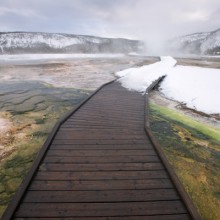
Yellowstone in Winter | Discover
Yellowstone in Winter
Winter in Yellowstone is steam and silence and dances of fire and ice. From the edge of Old Faithful, the centerpiece of the largest active geyser basin on earth, explosions echo like war drums beneath my feet. The ground hisses. A jet of scalding water erupts 90-feet in the air and crystalises instantly in the cold, falling like falsetto keys. This is the boiling ground. A wilderness of more than 10,000 hot springs, bubbling pools and tapestries of magma heated water. Temperatures here can plummet to fifty below. Herds of wild bison, elk and wolves roam free. Winter in Yellowstone is violence and solitude, life or death, a clash of fire and freeze.

Yosemite: High Sierra Loop | Adventure
Yosemite: High Sierra Loop
Mount Hoffman rises from the forests of Yosemite like a stone titan. From its steep and dauntingly exposed 11,000-foot summit the Sierra Nevada Mountains unfold before me in a panoramic of swirling granite peaks, like waves frozen in a storm, sunbeams break over the sheer face of El Capitan and the cracked edifice of Half Dome cuts like a shark’s fin through the mist of the valley below. Yosemite is the crown jewel of America’s National Parks, one of the most recognisable and stunning landscapes on Earth. But it is something more than that too.

Colorado: Cliff Camping | Adventure
Colorado: Cliff Camping
I am hanging from a cliff, 500ft above the ground, in the middle of the night, with nothing to occupy my thoughts but pitch black air, bare rock walls and a dose of vertigo strong enough to cower a harpy eagle. I should be sleeping; I’ve been trying for hours. But six billion years of evolutionary common sense is keeping my pupils dilated to a steady panic. Some fears, I realise in sudden horrific clarity, are too primal to be conquered. They must be endured.
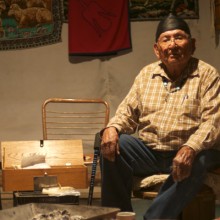
Navajo Medicine Man Ceremony | Encounter
Navajo Medicine Man Ceremony
The medicine man sits before a pile of hot coals spread out on the compacted red earth floor of his Hogan – the traditional home of the Navajo. “This is Native American church,” he tells me, pulling shiny black arrowheads and Golden Eagle feathers from his wooden medicine box, and twisting a thick translucent crystal before the flames.

Interview Ryoei Takagi: Shugendo Monk | Encounter
Interview Ryoei Takagi: Shugendo Monk
Whilst walking the Kumano Kodo Pilgrimage Trail in Japan I had a rare opportunity to interview a Shugendo monk. The entire Kumano region is sacred to the followers of Shugendo who have lived and walked these arduous mountain slopes for thousands of years. read more…

Enlightenment In Nature | Connection
Enlightenment In Nature
Here’s an idea: burn every self-help book you’ve ever read, ignore every piece of guru advice you’ve ever been given and just get into nature instead. I mean really get into it. Climb a mountain, swim a river, run a rocky shore. The spirit is not nourished by self-reflection, it’s nourished by the world itself. Immerse yourself in it.

Iceland: Into the Volcano | Adventure
Iceland: Into the Volcano
As I stand on the edge of the volcano these words echo in my mind – “to descend into the interior of a canon … when perhaps it is loaded, and will go off at the least shock, is the act of a madman.” So begins the ‘Journey to the Centre of the Earth’ described in Jules Vernes 1864 novel, and so too begins my own. I am about to do something truly extraordinary. I am about to go inside a volcano. read more…

Scotland: River Nevis Race | Adventure
Scotland: River Nevis Race
I am standing on the edge of a thundering 40ft waterfall with an inflatable pool Lilo in my hand, a swirling mass of white-water beneath my feet and a man telling me to jump. This is the defining moment of the River Nevis Race – an annual bout of Scottish lunacy which sees competitors fling themselves down a two mile stretch of white-water rapids with nothing but a novelty inflatable device for company. read more…

Tenerife: Stargazing | Connection
Tenerife: Stargazing
There is a moment watching stars when you suddenly get it. I remember a summer, lying on my back in the cool night grass, and feeling that nothing could be more important then finding a way to touch those fiery distant lights. But I never did build that rocket ship, and somewhere along the line I stopped looking up. Not anymore. The night is rising over Mount Teide National Park in Tenerife – one of the best places in Europe for stargazing – and I’m here to find that feeling again. read more…
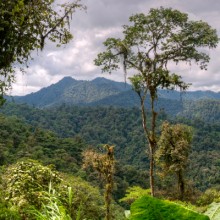
Ecuador: Cloud Forest Safari | Discover
Ecuador: Cloud Forest Safari
In the cloud forests of Ecuador water is king. It hangs on the moss-covered trees like a thick wet coat. It drips light-footed from the canopy and gathers in globules, like prisms, that stick to upturned palm leaves and blades of sheer grass. Its noise is ever present, in rivers and waterfalls, in the soft squelch of mud and the torrent of sudden rain. read more…
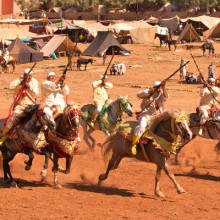
Morocco: Festival Fantasia | Discover
Morocco: Festival Fantasia
The gunshot snaps all attention to its sound. Two-dozen Berber horsemen charge across the red earth, their rifles raised in unison at the midday sun. Behind me a toothless women flicks her tongue in loud ululation as the riders circle back towards us, gun-smoke leaking from their barrels and shrouding us in a mist of blood-coloured dust. read more…

